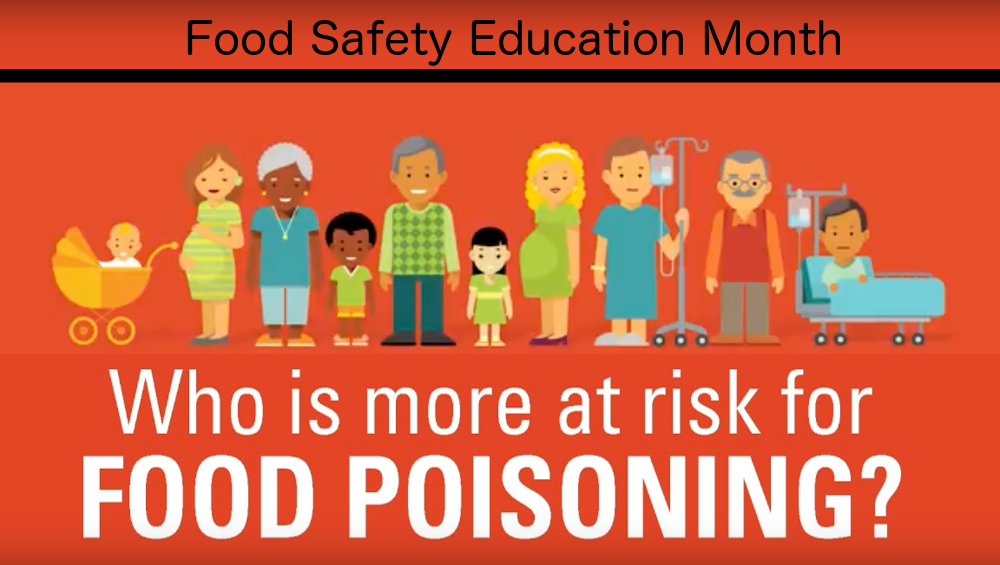Contributed
Editor’s note: This is the first in a series of articles and opinion columns we are publishing in recognition of Food Safety Education Month.
September is National Food Safety Education Month. It provides an opportunity to raise awareness about steps consumers, educators and others can take to prevent food poisoning.
Every year, an estimated 1 in 6 Americans — or 48 million people — get sick, 128,000 are hospitalized, and 3,000 die from eating contaminated food.

Some people are more likely to get a foodborne illness, also called food poisoning, or to get seriously ill.
Join us in sharing information about which groups of people are more likely to get food poisoning, symptoms of food poisoning, and what steps they or their caregivers can take to help prevent it.
Also, learn when to see a doctor and how to report food poisoning.
Everyone is at risk of food poisoning, but some groups are at higher risk. Children under the age of 5, adults age 65 and older, pregnant women, and people with weakened immune systems are more likely to get a foodborne illness, and to get seriously ill.
The CDC advises people to see a doctor if they experience severe symptoms such as fever over 101.5 degrees F, bloody diarrhea, frequent vomiting, diarrhea lasting more than three days, or signs of dehydration.
Help increase food safety awareness in your community by sharing key messages through social media, on your website, and in your newsletters.
You can also:
- Watch and share videos of groups at higher risk for food poisoning and severe symptoms that should lead to a doctor’s visit.
- Join the food safety Twitter chat on Sept. 24 from 2 p.m. to 3 p.m. EDT, co-hosted by Media Planet, the National Restaurant Association, and CDC. Use #FoodSafetyChat to join the conversation.
- Promote food safety resources for restaurant managers and environmental health professionals.
- Share information for health departments as it relates to their role in outbreak investigations.
Resources
- Most of the CDC’s food safety materials are available in Spanish and some are also available in other languages.
- CDC Feature: Prevent Food Poisoning (English) (Español)
- Graphics for Food Safety Education Month
- Social Media Messages for Food Safety Education Month
- Video on Safety Tips for Handling and Preparing Common Food
- Environmental Health Resources for Restaurants
- Free Course: Legal Aspects of Public Health Food Safety
Additional information and prevention tips
- CDC Food Safety
- Food Safety Web Features
- Food Safety Infographics
- Be Food Safe: Protect Yourself from Food Poisoning
- Food Safety for Food Workers
- Preventing Norovirus Infection
- Foodsafety.gov
- Fight BAC! Partnership for Food Safety Education
- FDA: Food Safety: It’s Especially Important for At-Risk Groups
- FDA: Safe Food Handling: What You Need to Know
- FDA: Refrigerator Thermometers: Cold Facts About Food Safety
- USDA: At-Risk Populations
- USDA: Foodkeeper App: Your Tool for Smart Food Storage
(To sign up for a free subscription to Food Safety News, click here.)

